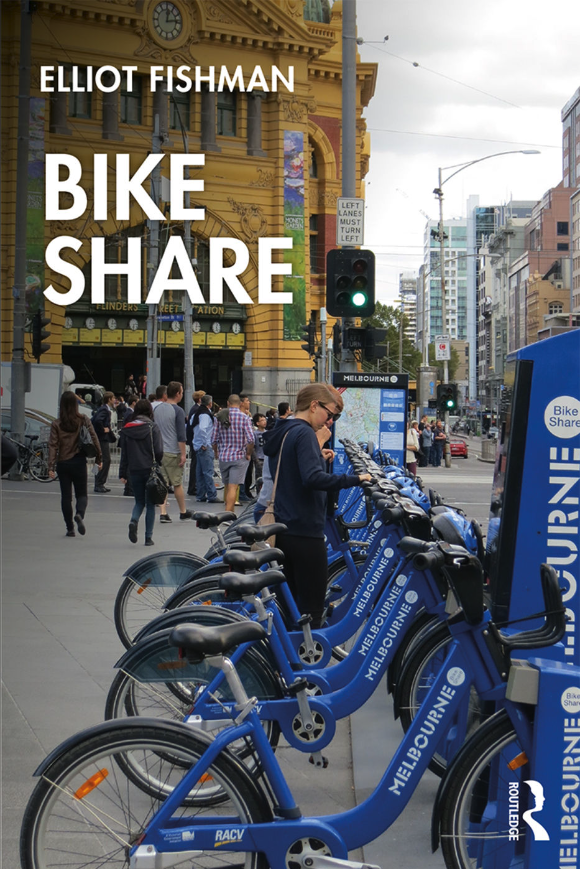Melbourne e-Bike Share Evaluation
We were commissioned by three of Melbourne’s inner urban councils to evaluate the performance of the Melbourne e-Bike Share trial.
Location
Melbourne
Budget
<$50,000
Commencement
2022
Completion
2022
Overview
We were commissioned to evaluate the Lime e-bike share trial and provide recommendations for the future of e-bike share in Melbourne. Key recommendations included:
- Grow the network of safe cycling routes
- Increase the catchment of e-bike share, to cover Melbourne’s inner and some middle ring suburbs, as identified in the map below.
- Increasing the density of bikes within the catchment, to be consistent with best practice and provide a more usable system for everyday transport
- Lower the cost of use, to enable regular, everyday use at a competitive price and integrate access with public transport ticketing.
What we did
We evaluated the usage data provided to our team from the bike share operator, to determine the program’s usage profile. We were able to determine the characteristics of usage, such as number of trips per bike, per day, average trip length and the profile of usage throughout the day and week.
We also conducted intercept surveys with members of the public, to gain a better understanding of the barriers to bike share use, and what changes would help facilitate greater levels fo use.
Finally, we provided recommendations to maximise the contribution bike share can make to enhancing the sustainability and liveability of Melbourne.
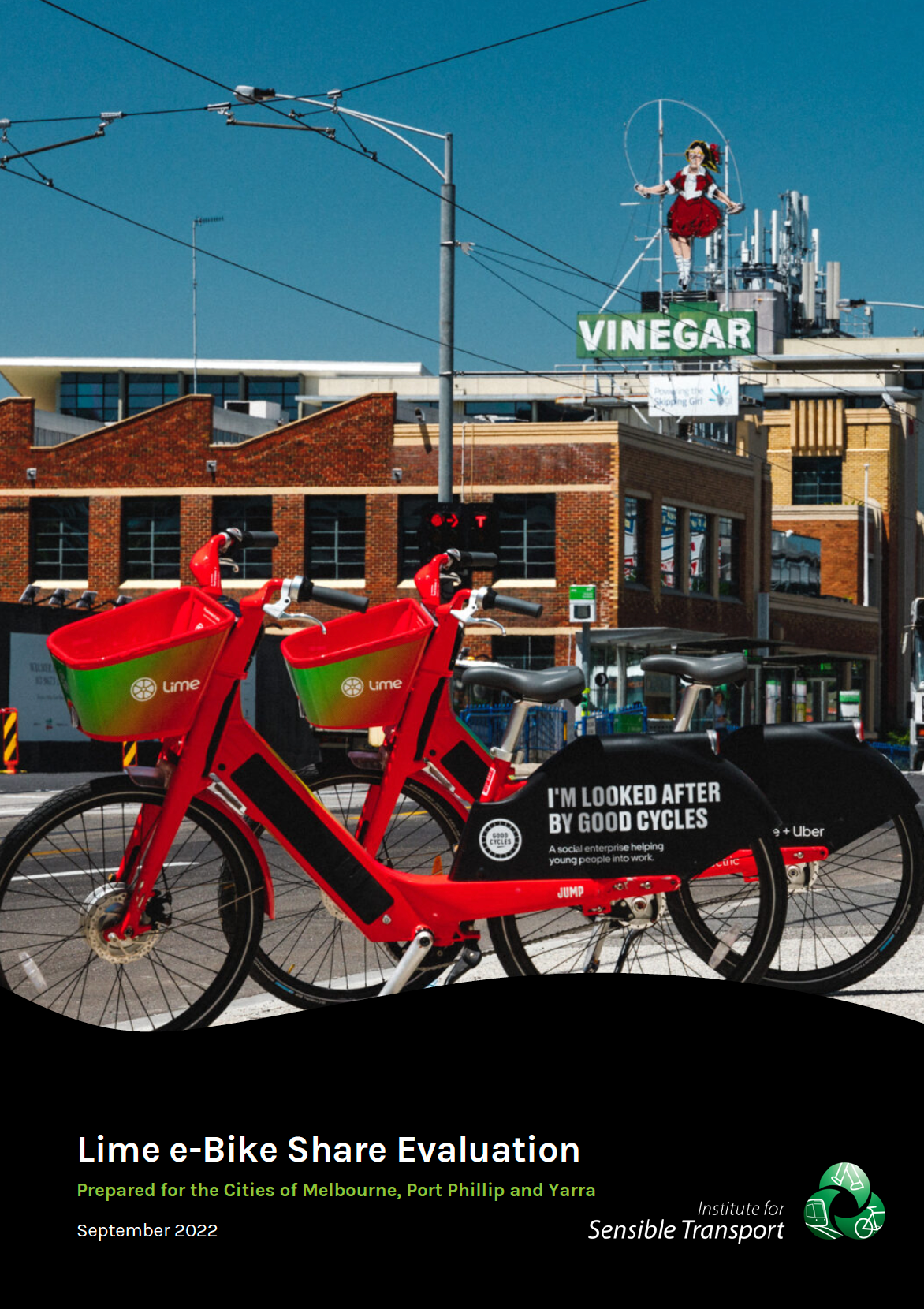
Trip distances are generally short. Most trips are under 2km and last less than 10 minutes. We provided recommendations to boost the number of longer trips.
Understanding hotspots
One of the benefits of modern, GPS-connected bike share systems is their ability to provide information on where trips start and end. We’ve used this data to generate the map below, identifying hotspots for where trips start.
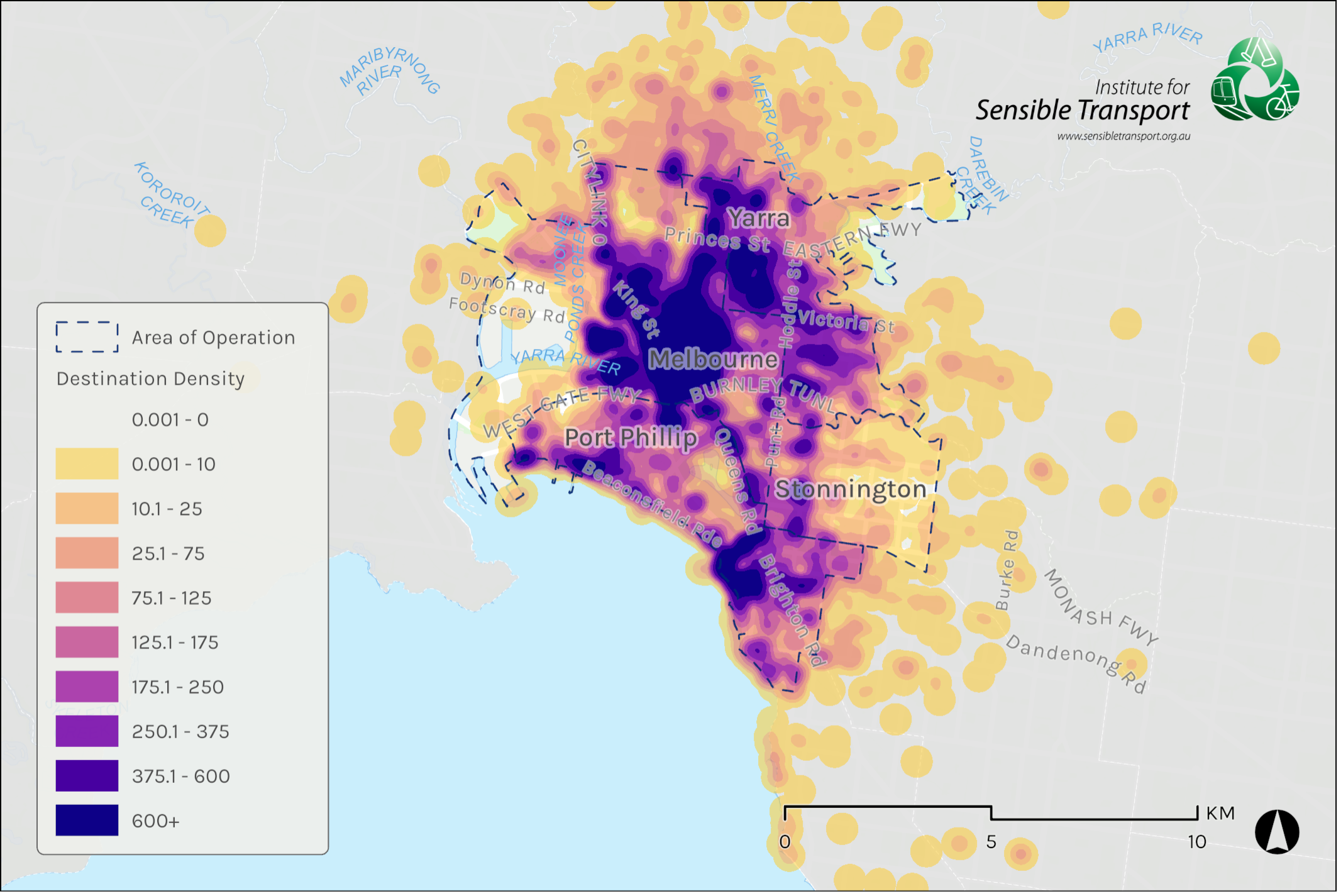

Visualising desire lines
The map to the right shows the desire lines for e-bike trips across the study area. The lines of movement flow from the centroid of each suburb.
Several noticeable corridors appear from this analysis. An east-west corridor between North Melbourne and Abbotsford is apparent, with approximately 22,500 trips between the four segments. The second east-west corridor runs from Richmond, through East Melbourne, to Docklands via the CBD. This has approximately 21,300 trips across it. The St Kilda Road and Swanston Street corridor, between South Yarra and Carlton, has 13,500 trips. St Kilda to Albert Park is the final corridor that emerges from the analysis, with 14,500 trips between the two suburbs.
A key finding is that 14 out of the top 20 journey combinations are trips that start and finish in the same suburb. What this indicates is that the e-Bike share program is most frequently used for neighbourhood trips, rather than large, cross-city journeys. Should the size of the catchment enlarge in the future, we’d expect more journeys will be inter-suburb.
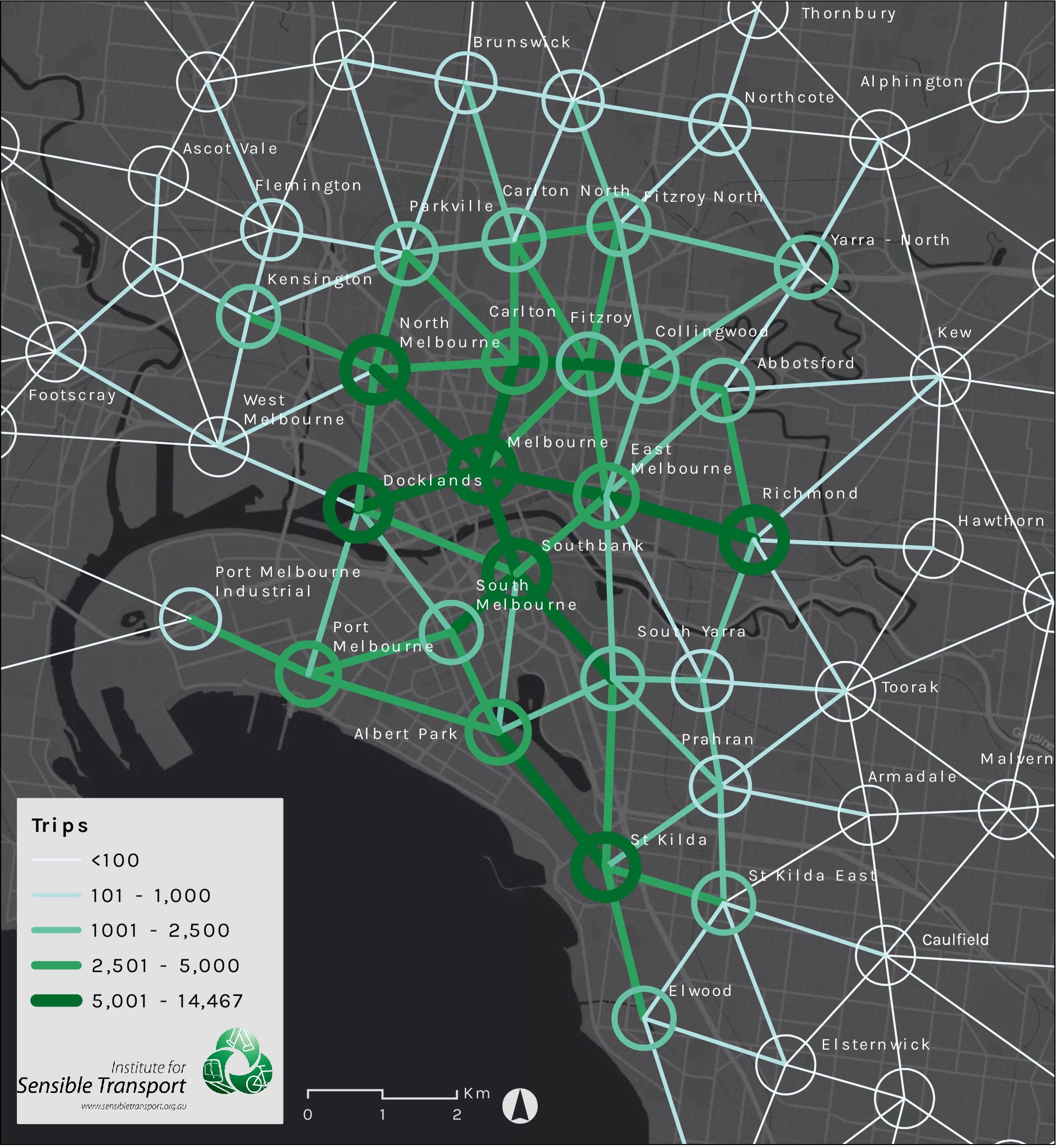

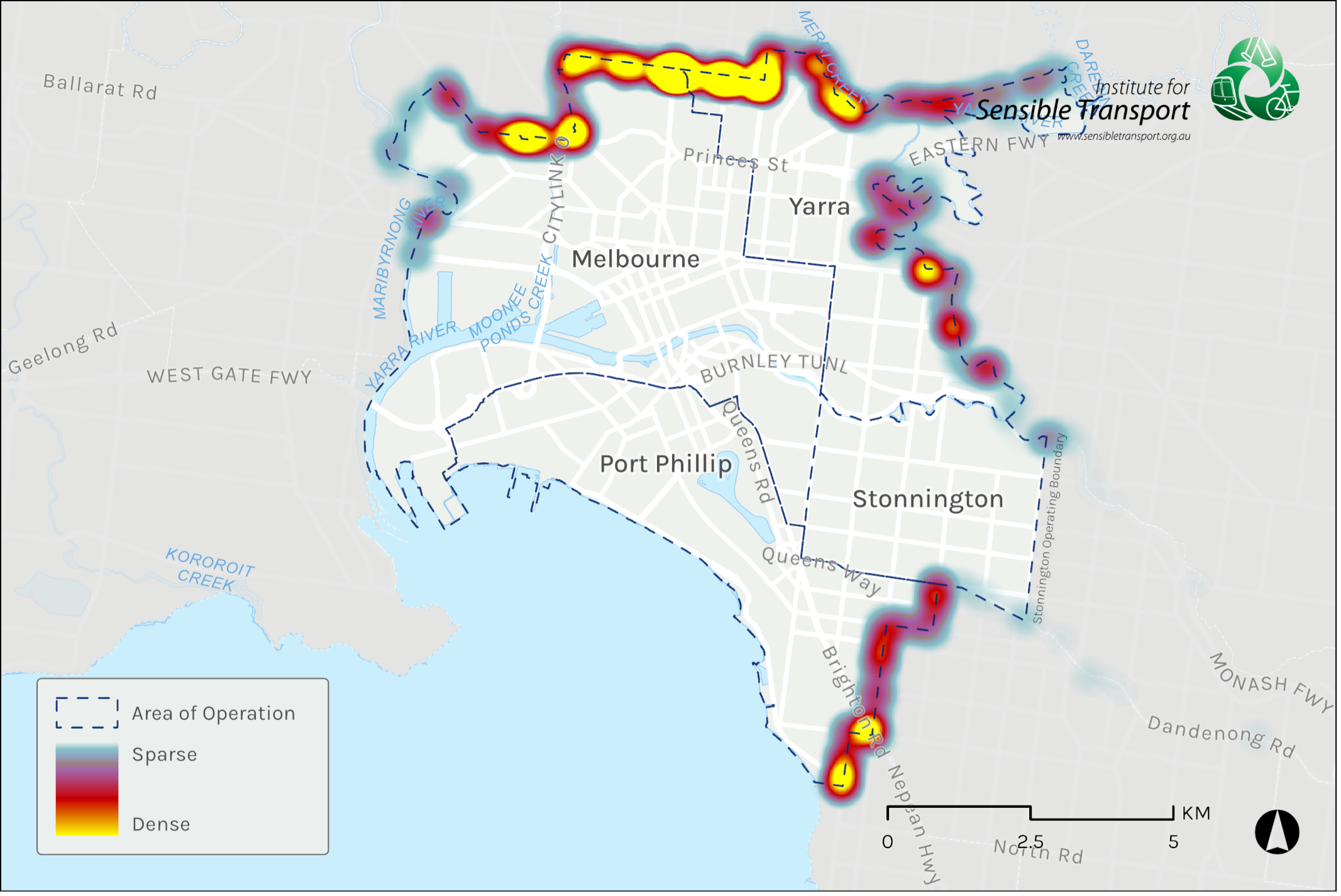

Assessing expansion possibilities
Melbourne is a large city, but the e-bike share trial is small, covering just four municipalities. We analysed the data to visualise where trips were ending within 100m of a municipal border. This provides insights into where demand may exist for expansion into neighbouring local government areas. The map shows a high number of trips ending on the northern border. This same area has some of the highest bike riding participation, according to the Census, so it is unsurprising that demand is focused in this area.
Bike Share, the Book
Our Director, Dr Elliot Fishman completed his PhD on bike share and put this work into one, easy to understand book on the topic.
Bike Share examines all the major developments in the 50-year history of bike share. The book provides a detailed focus on contemporary bike share programs, including many of the most prominent systems, such as those in Paris, London, and New York, as well as the dockless bike share sector. This book also addresses how rapid technological innovation, particularly in terms of mobile internet devices and electric-assist bicycles may change the face of not just cycling, but urban mobility more generally.
The book provides scholars, city planners, transportation practitioners and students with a resource that captures the most pertinent scientific findings and practical lessons that have been from bike share programs around the world.

 More info about this project
More info about this project